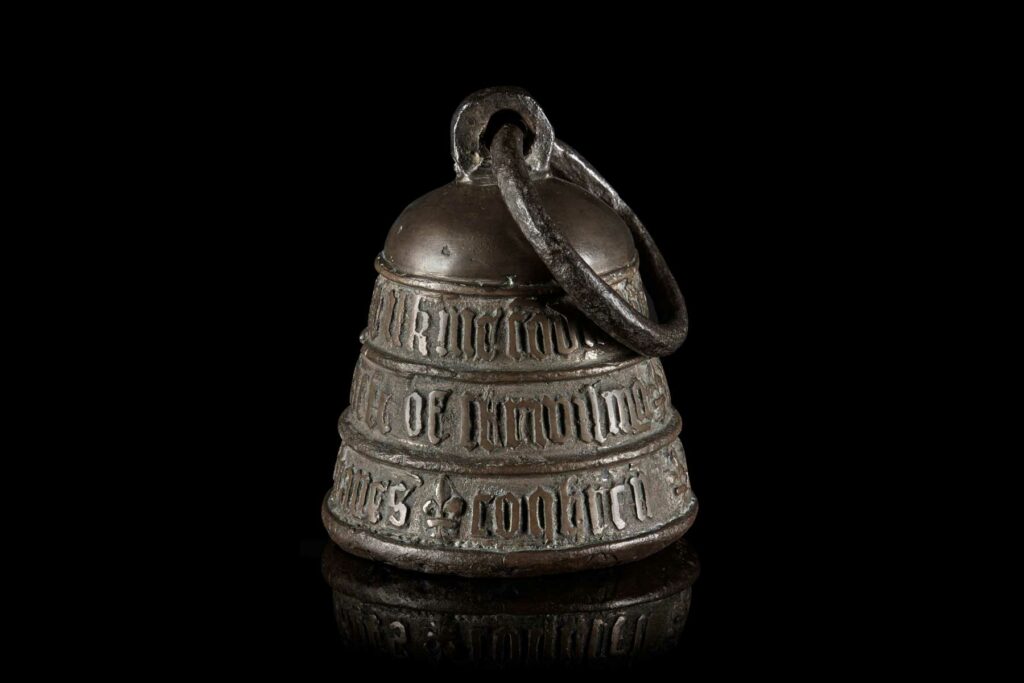
This is the earliest known example of a Scots trone weight. Its surface is almost completely covered with gothic inscriptions, the phrases separated by delicate fleurs-de-lys. It tells us that it was made by Hans Cochran, who was a Flemish master gunner at the royal artillery workshops at Edinburgh Castle.
The weight dates from 1553 and was commissioned by Provost John Craigengelt of Stirling for a meeting of the Convention of Royal Burghs of Scotland. The Convention discussed control of the weights and measures held by the burghs at the meeting. We believe this weight was made as a result of their recommendations.
The various weights and measures used in Scotland evolved over the centuries and were greatly influenced by the systems used by trading partners, especially England, Flanders and France. National standards were not really imposed until the second half of the 17th century.
John Craigengelt became involved with the running of the burgh of Stirling in the 1520s and was a town Baillie by 1533. He was made Provost on several occasions from the 1540s to the 1560s. An occasionally violent feud with the local Livingstone family does not seem to have affected his reputation – Craigengelt was important enough to attend the coronation of James VI in Stirling in 1567. And of course, his name is immortalised on the side of this impressive weight.